skopelos island
- 2017
- greece
- private, three detached houses & landscaping
new-build

three new homes perched over the harbour

Site
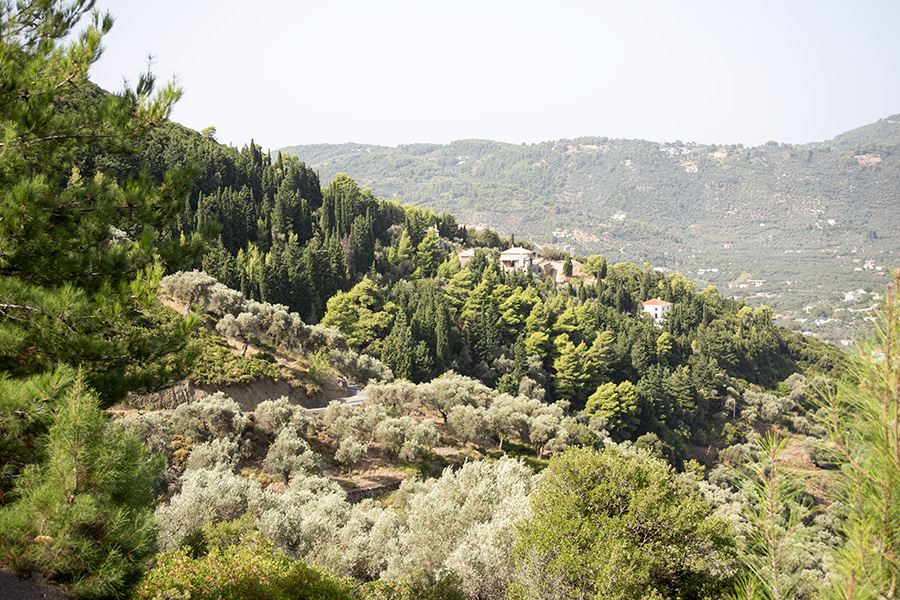
The site sits high in woodland overlooking the town and main harbour.
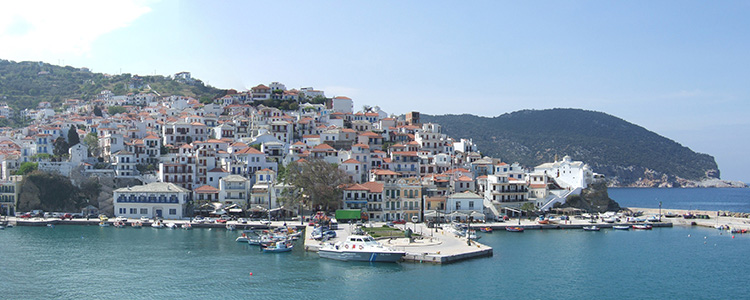
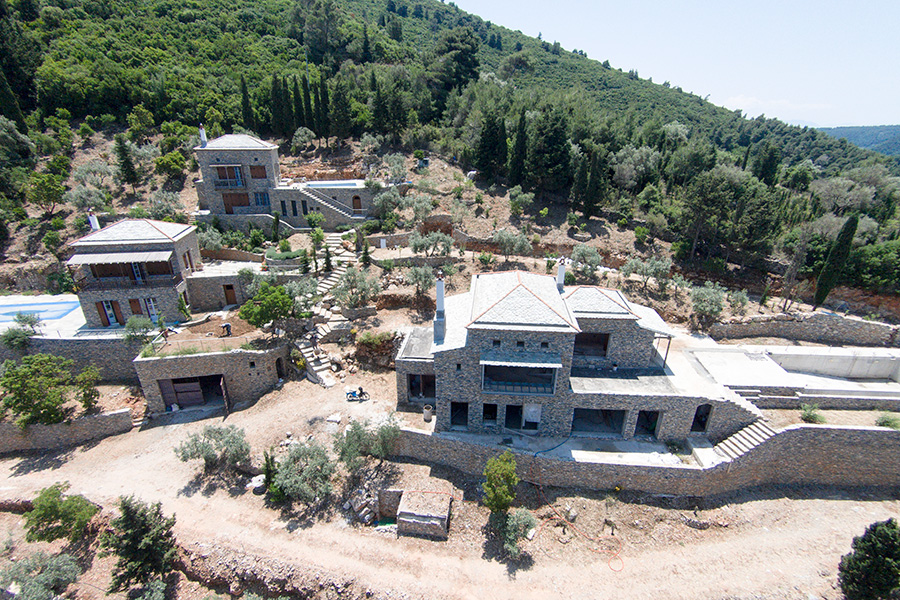
A key challenge was the relatively steep slope.
A series of terraces have been cut to create access, private gardens and open views to the harbour
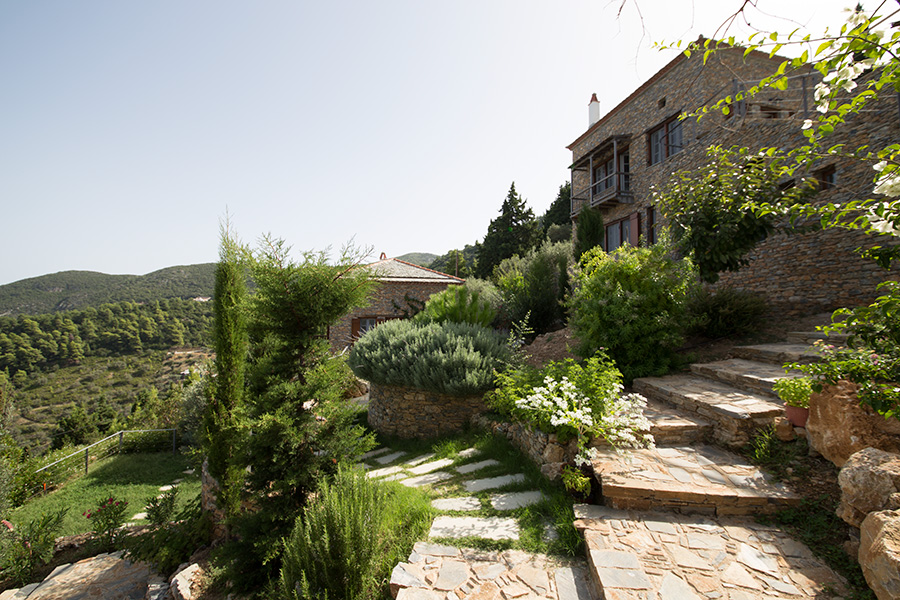
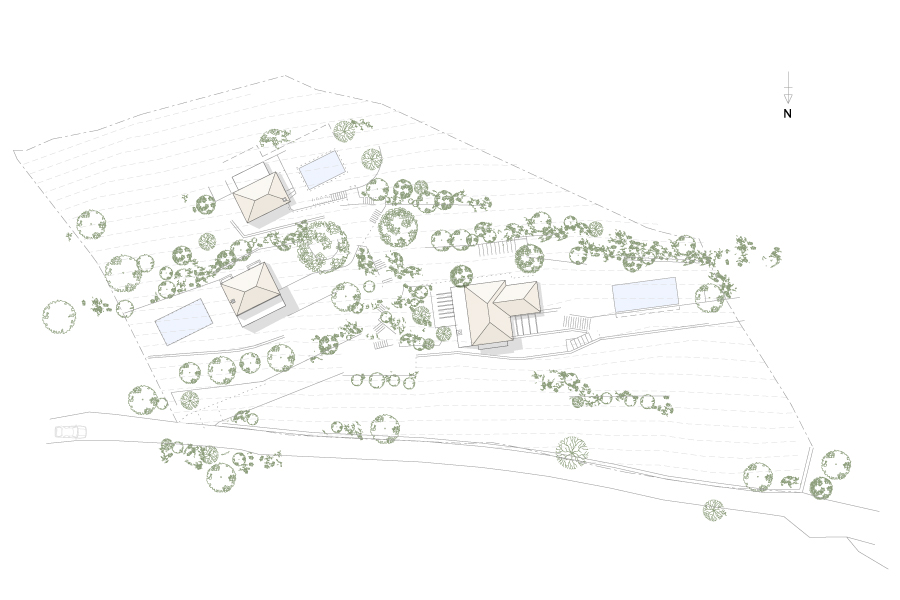
Views
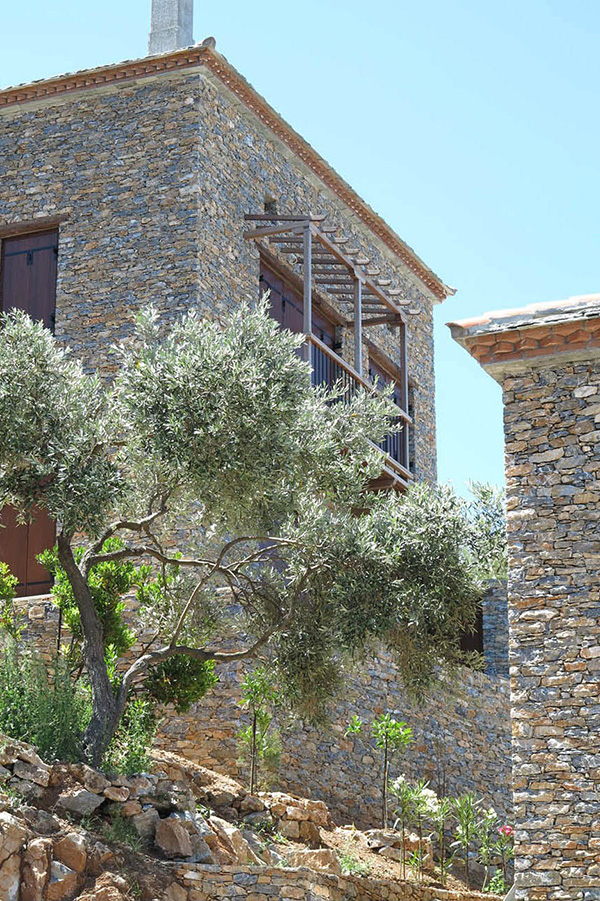
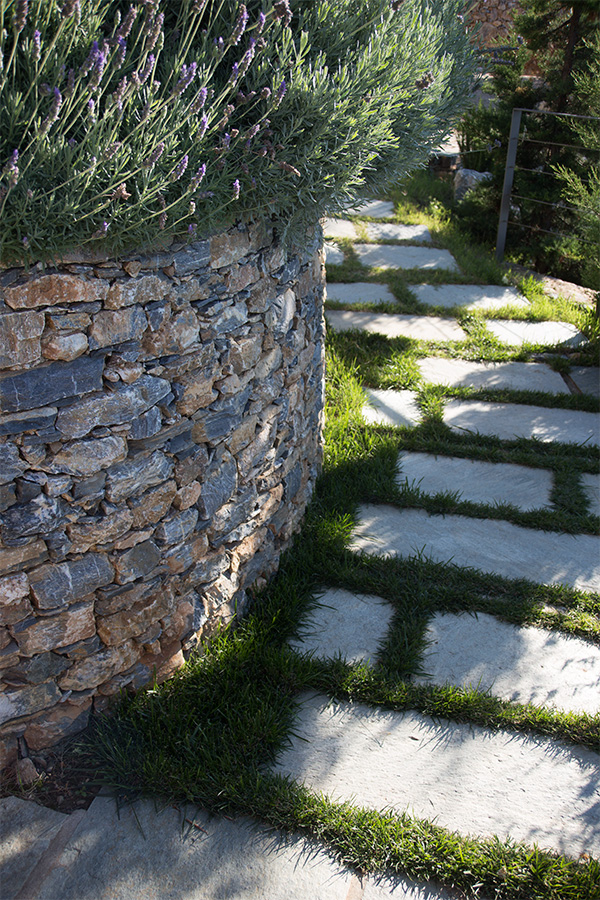
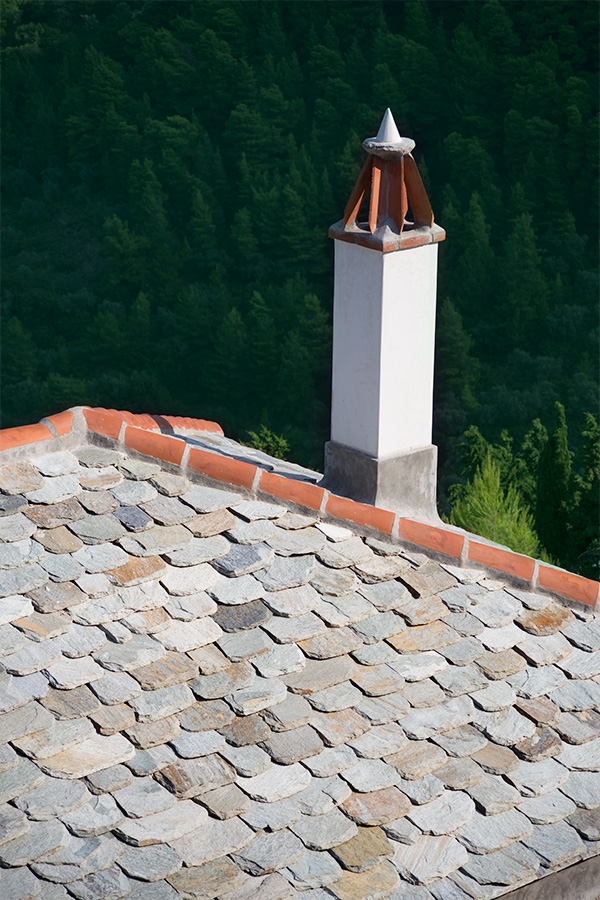
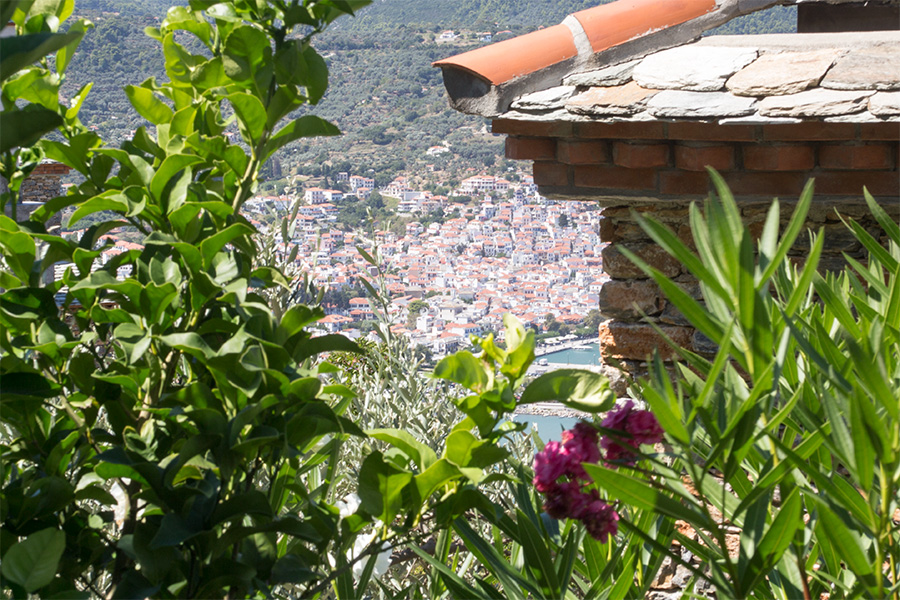
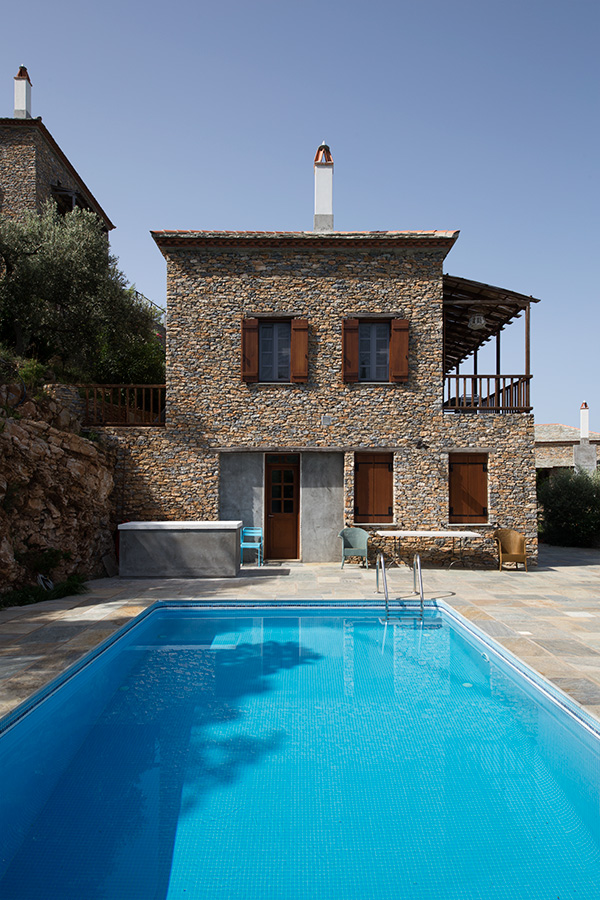
The houses face north over the main harbour.
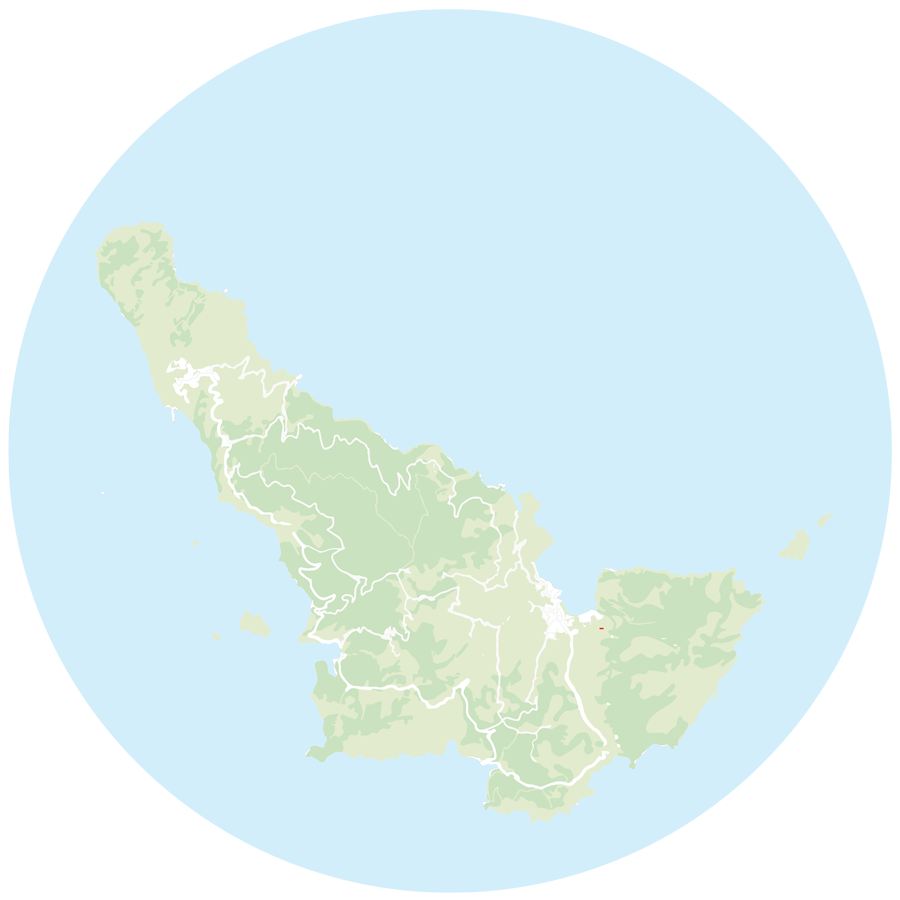
The houses face north over the main harbour.

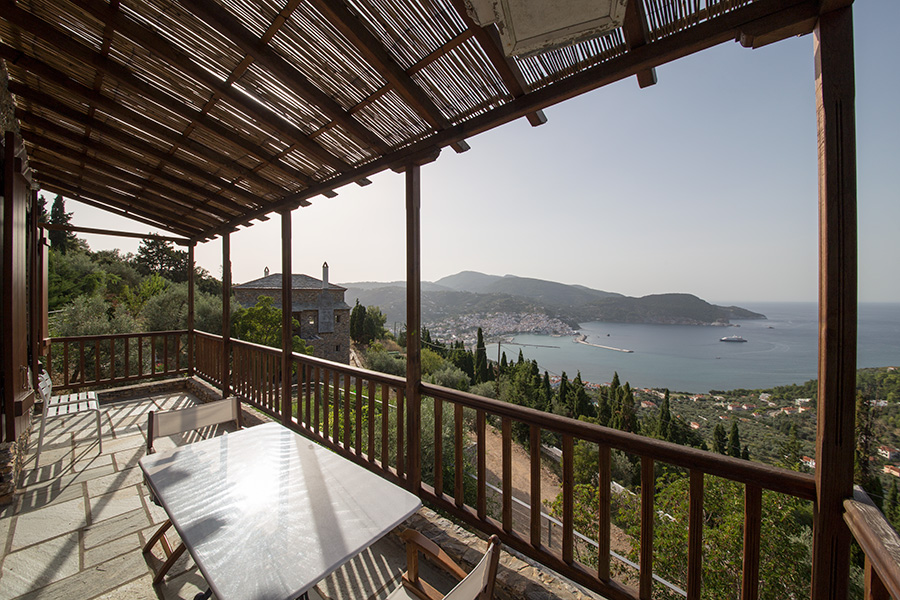
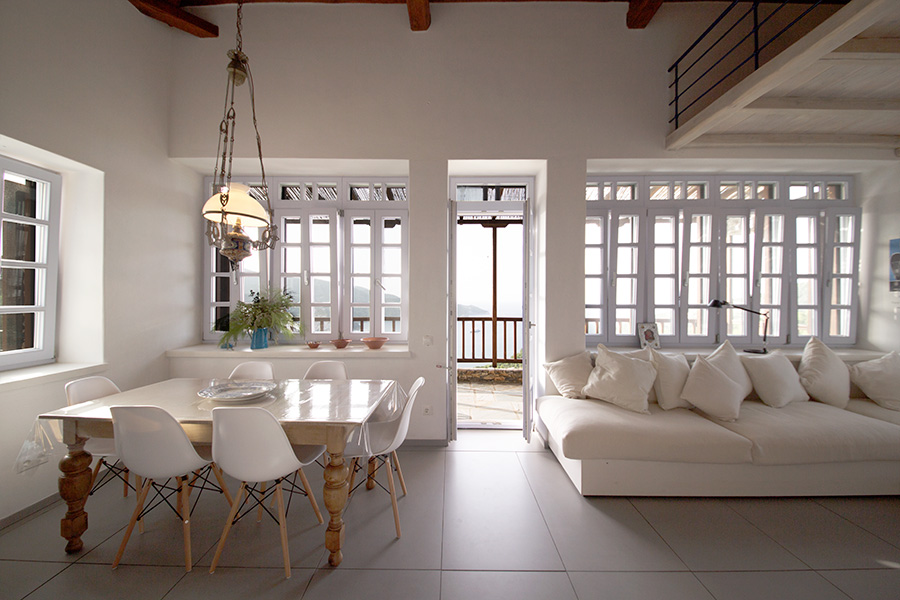
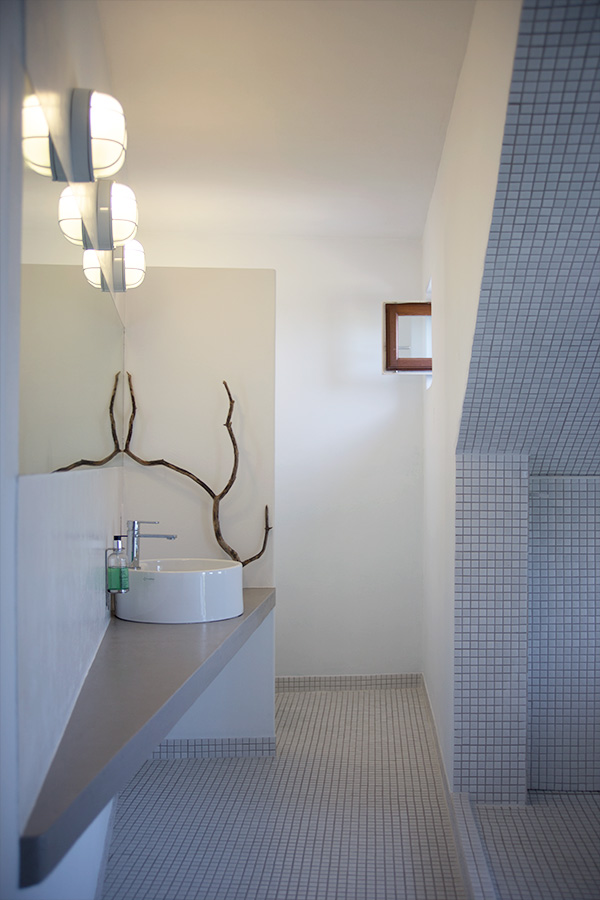
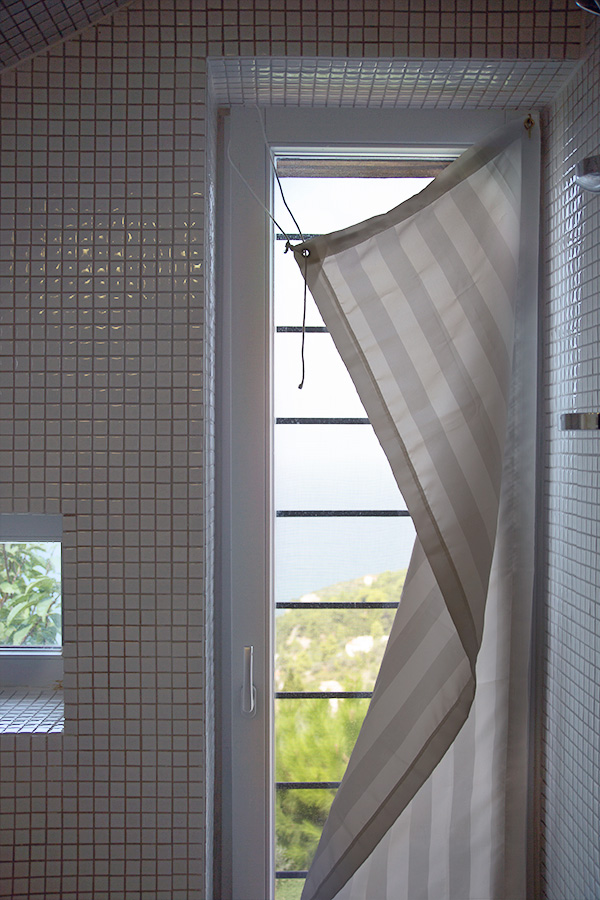

Hand-mixed Plaster
The plaster to the internal walls is naturally breathable, helping improve indoor air quality and prevent the build up of mould or dampness.
This is because traditional lime plasters are hygroscopic, which helps to regulate internal humidity by absorbing high concentrations of moisture in the air, and then releasing this on dryer spells.
The plaster has been prepared in the traditional way on site by hand-mixing:
- 2 parts white marble dust
- 1 part lime
- small part white cement
The marble dust is used as a filler, and sourced from waste material.
Lime and gypsum have been used as binders in historical mortars since ancient times.
The cement is used to help the mixture set, and includes limestone, clay and gypsum amongst its ingredients.
Being handmade plaster, throughout history in different regions others have experimented with ingredients such as rye flour, rice gluten, burnt gypsum, pork lard, curdled milk, fig juice, albumen, and malt to fatten the plaster, retard its setting and to regulate shrinking and cracking.

Exposed timber balconies and roofs are constructed from local sweet chestnut.
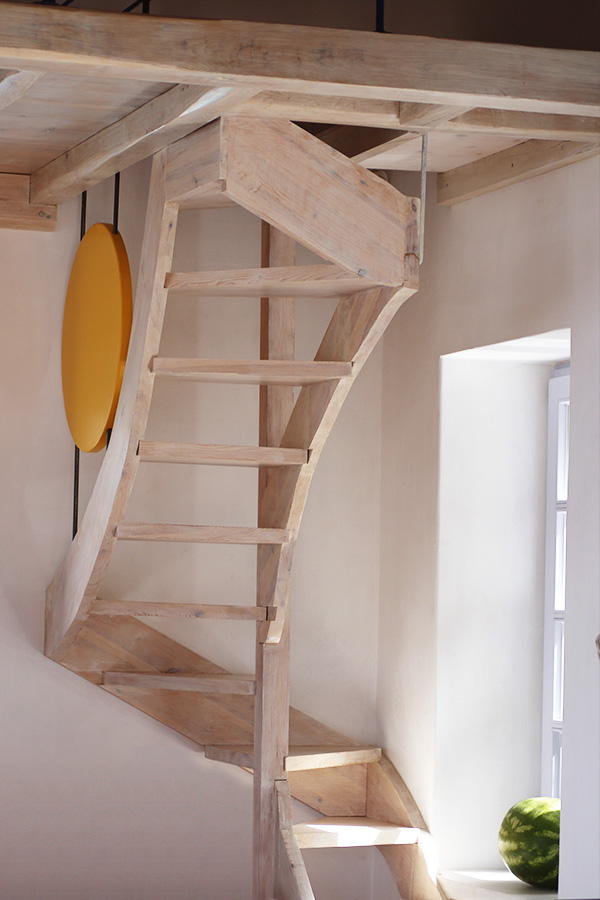
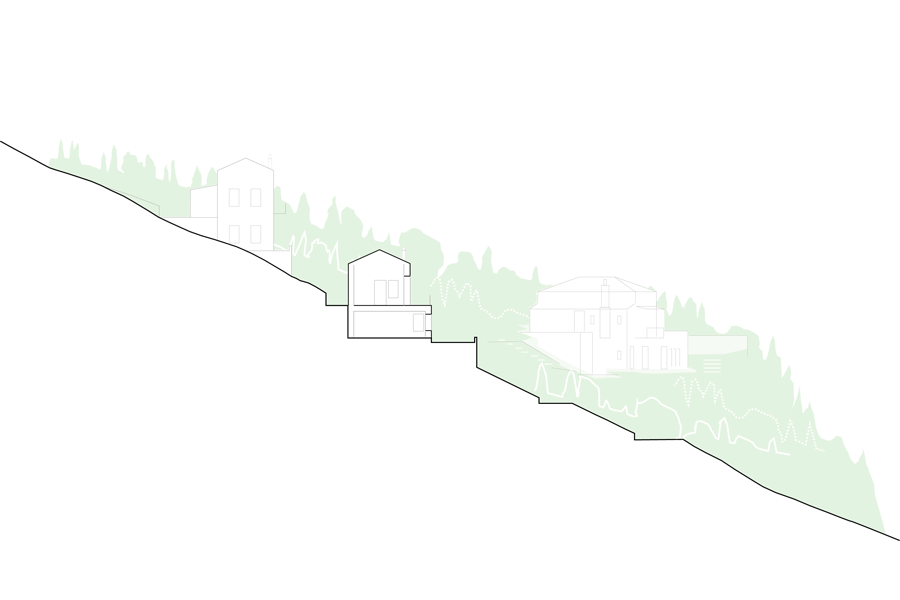
The houses are cut into the hillside rock.

The houses are cut into the hillside rock.
Landscaping and materials
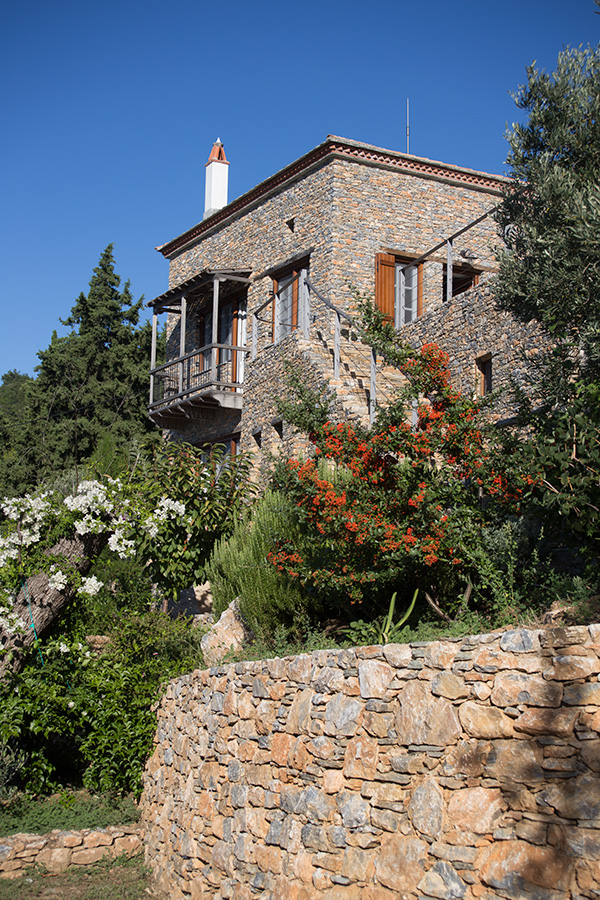
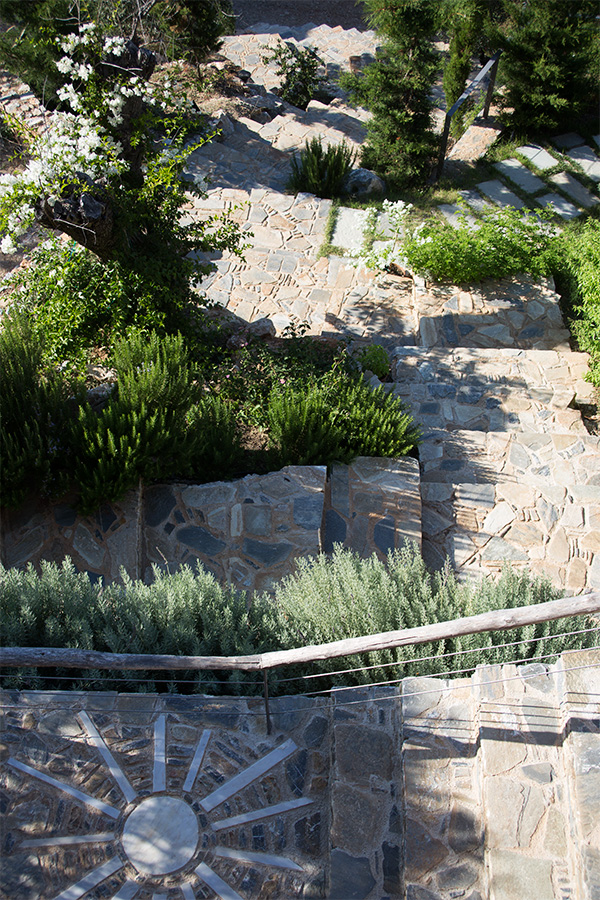
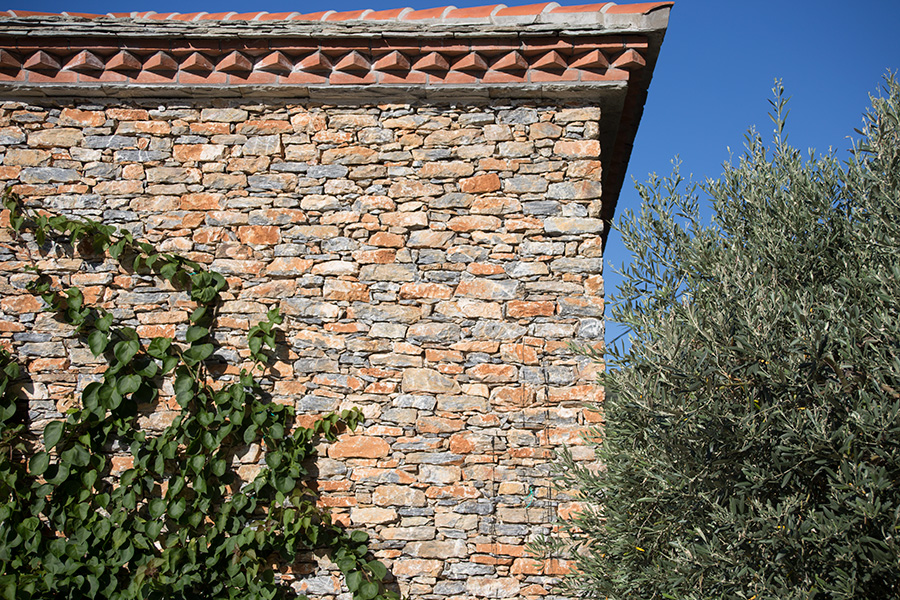

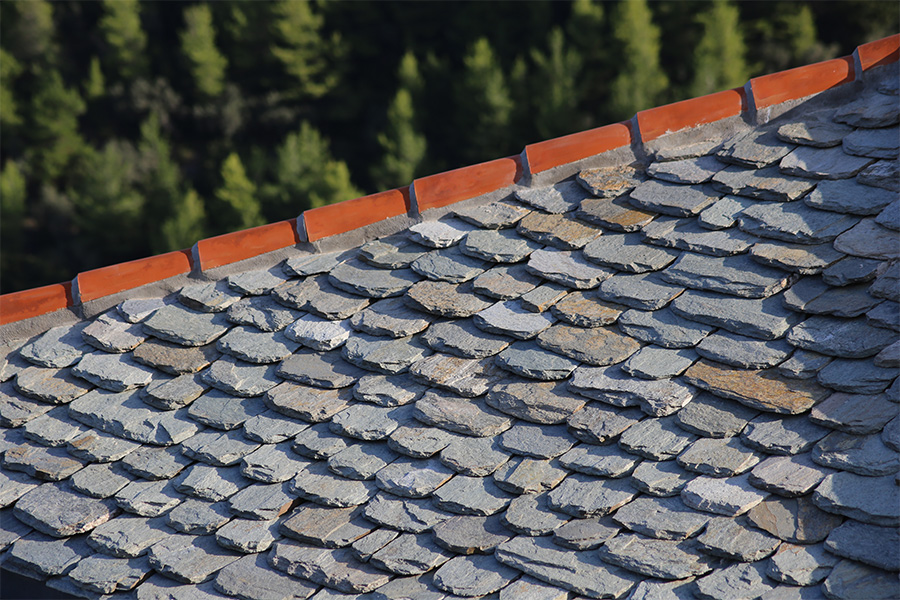
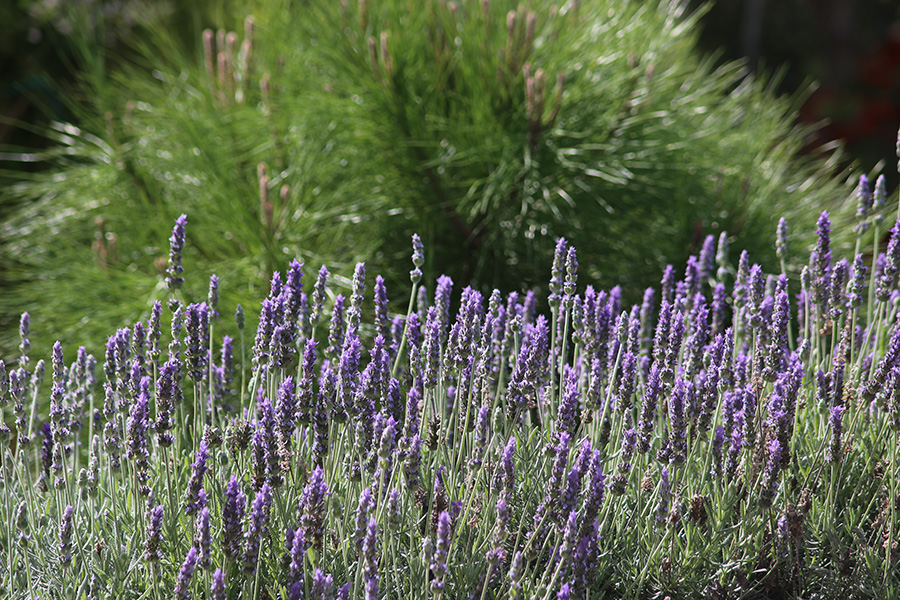
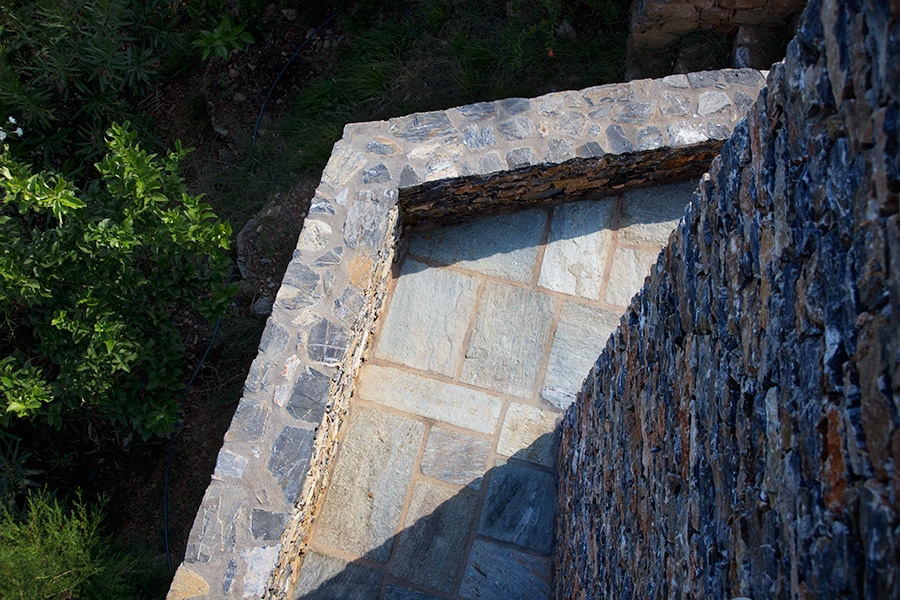
Landscaping has been a major component of the project, creating terraces, access roads and paths to link the houses.
Traditional brick cornices, timber lintels and slate roofs reinforce the local character. The interiors mix traditional with modern.
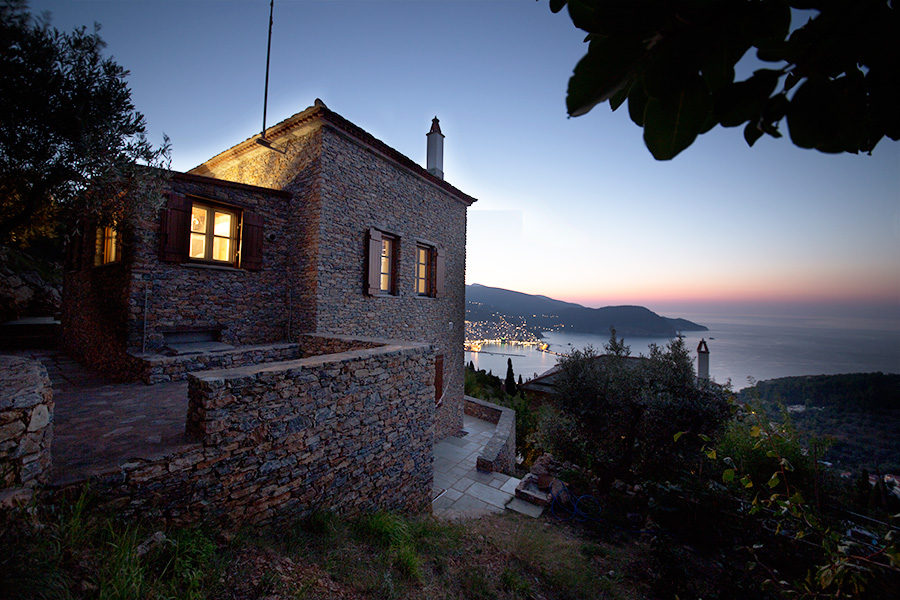
Sustainability

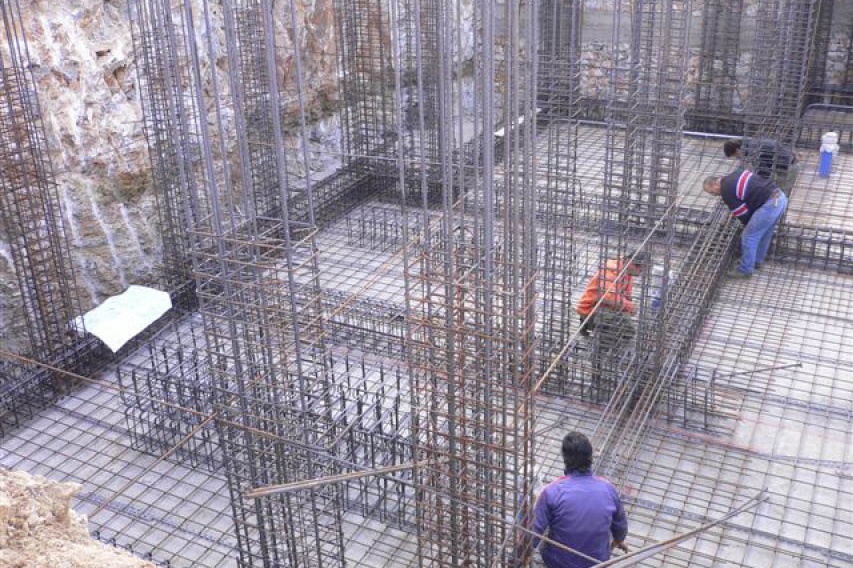
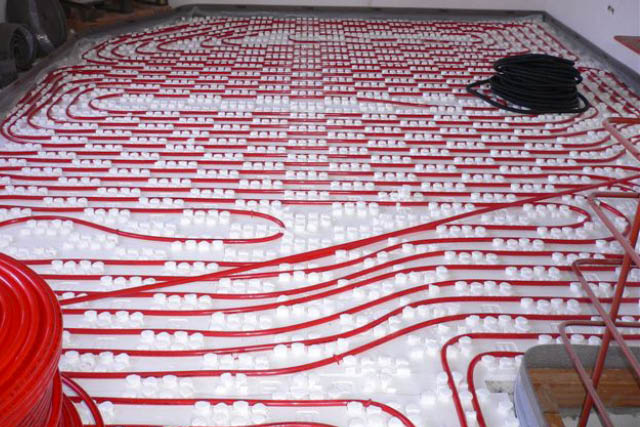
The houses have been designed to ensure comfortable and energy-efficient interiors both during the excessive heat of the summer and during the cold winter months when it has been known to snow.
The excavation necessary to build on this steep site provides:
- a natural earth shelter to the south elevation, where the sun is hottest
- an abundant supply of stone which is then worked by hand and re-used to clad the outside of the buildings and retaining walls
Thick walls of over half a metre provide:
- thermal mass through the use of the concrete frame and floor slabs, built to withstand seismic loads, alongside the stone cladding to the outside
- efficient insulation
The site is off the water grid therefore:
- all rainwater is and stored in basement tanks for re-use.
In the summer:
- large north-facing windows open up to take advantage of prevailing winds
- high level cross-vents maximise natural ventilation
In the winter:
- underfloor heating creates a comfortable environment
- an air source heat pump minimises power consumption of the heating
- an efficient wood-burning fireplace can be used boost the heat of the main living area
Construction
A key challenge was the solid rock which lies beneath a thin layer of existing top soil.
1. The site is surveyed.
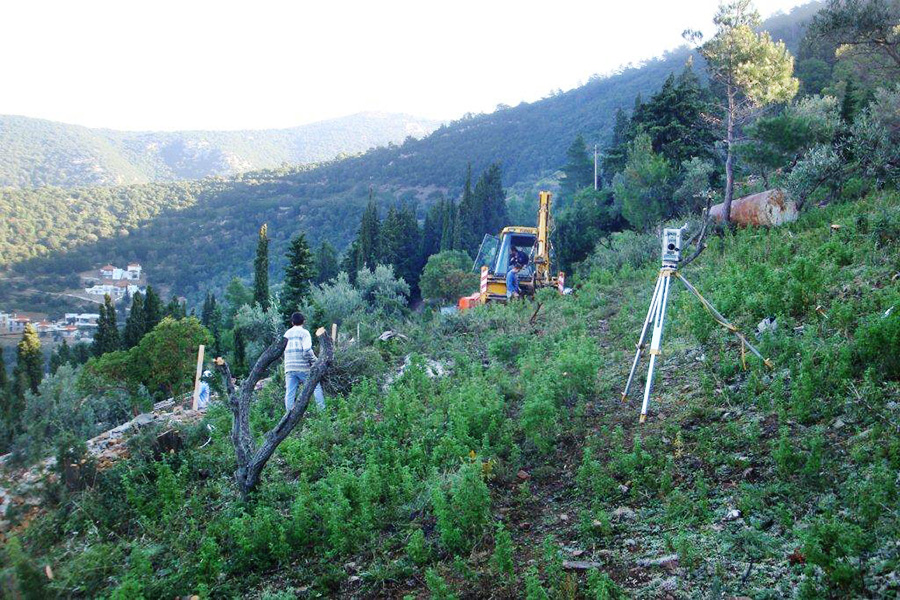
2. Rock core samples were drilled to check the structure of the ground below.
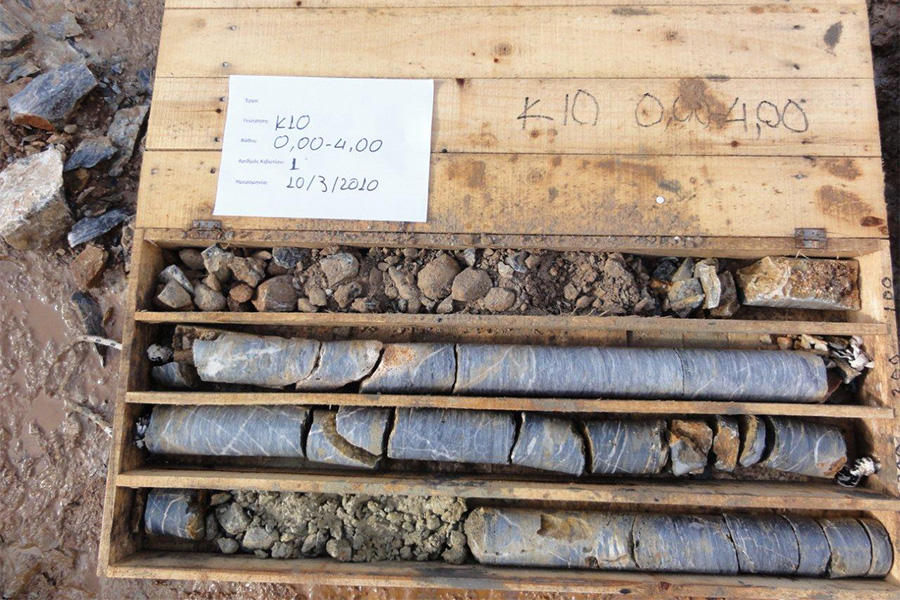
3. Deep excavations were made into the rock to create underground water storage tanks.
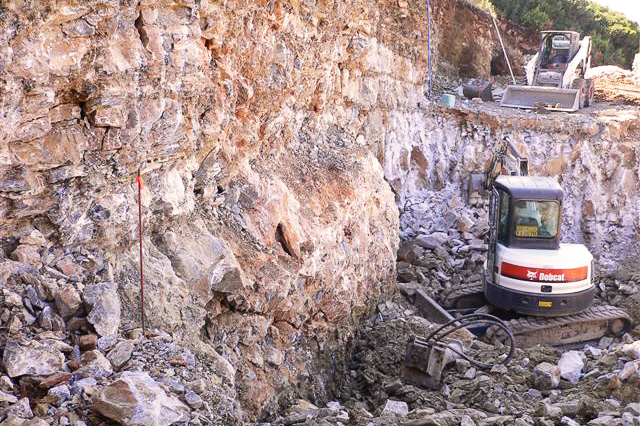
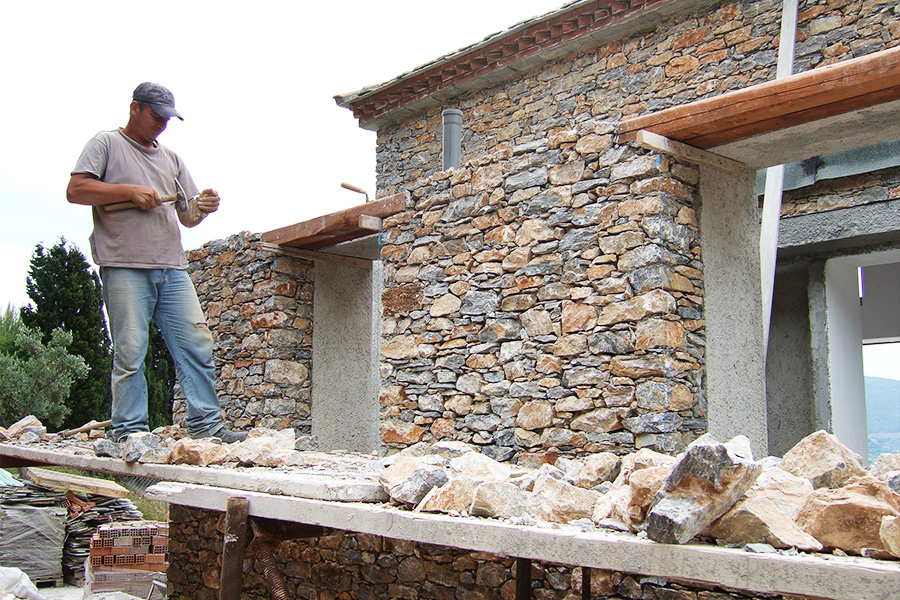
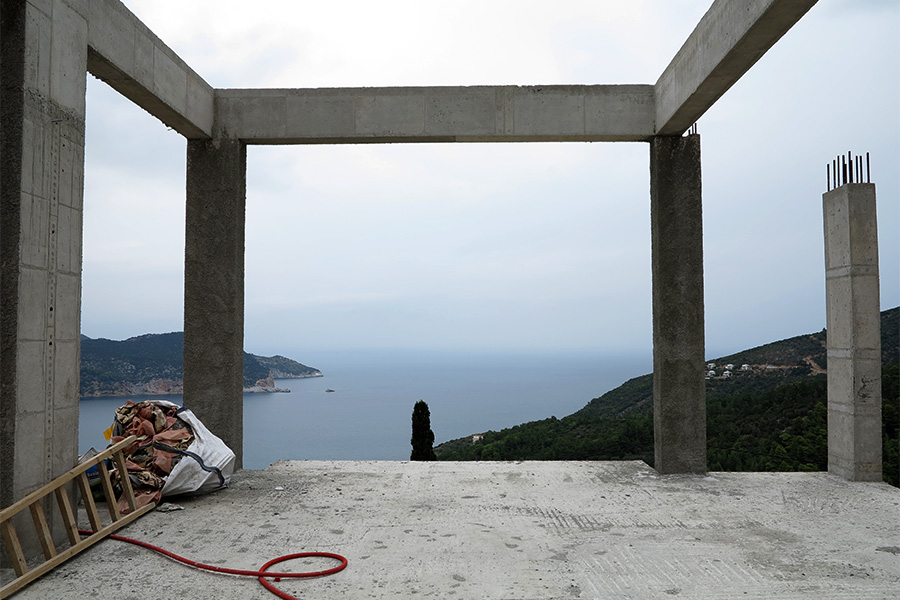
The primary structure is concrete, designed to withstand seismic loads.
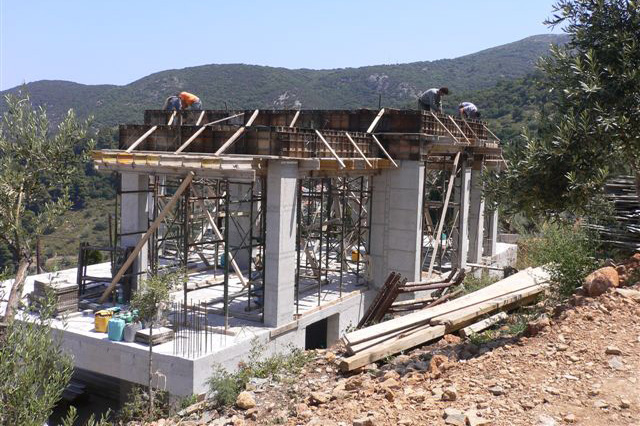
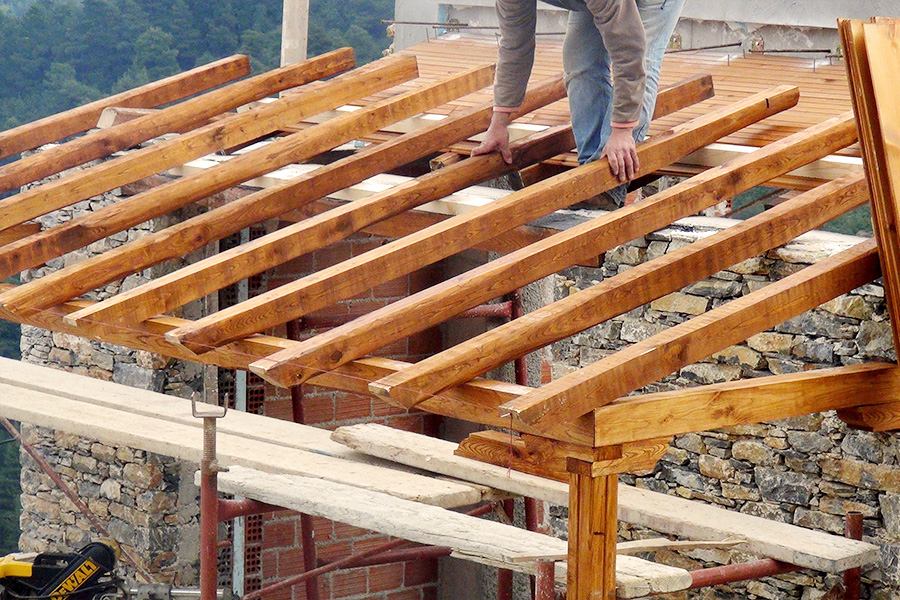
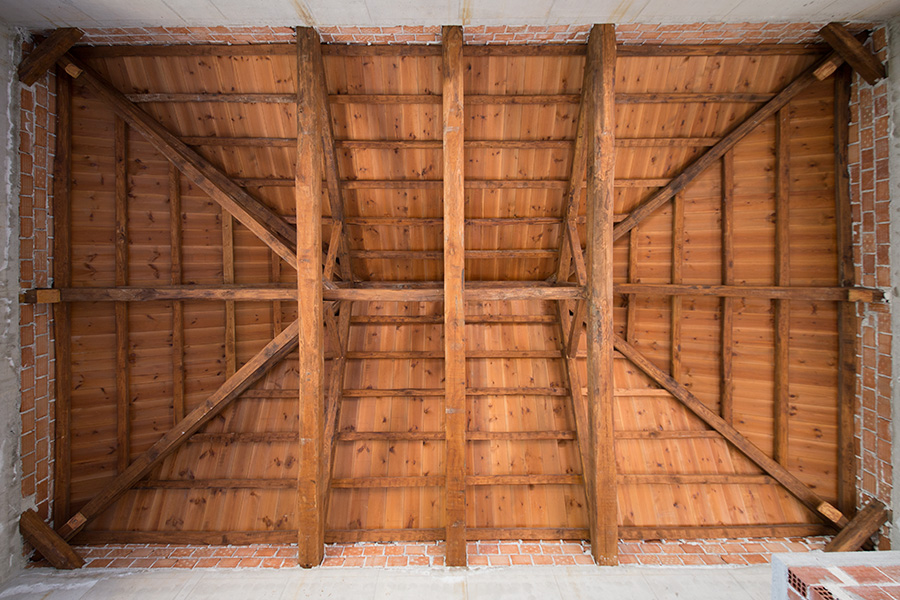
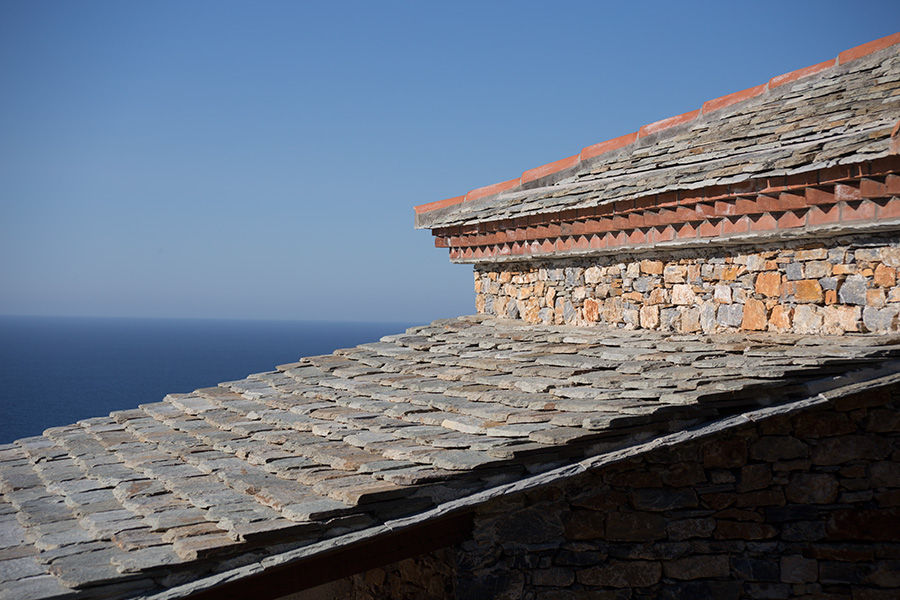


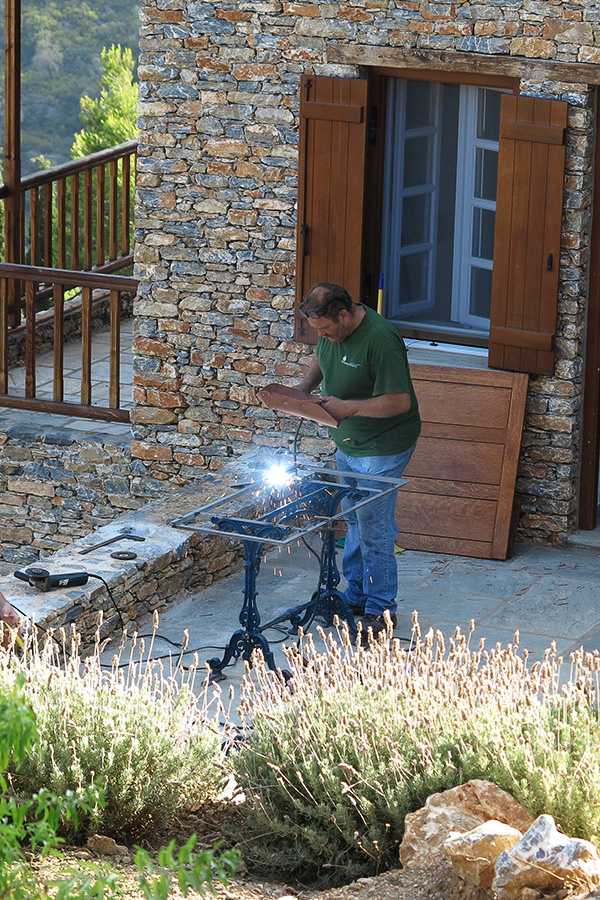
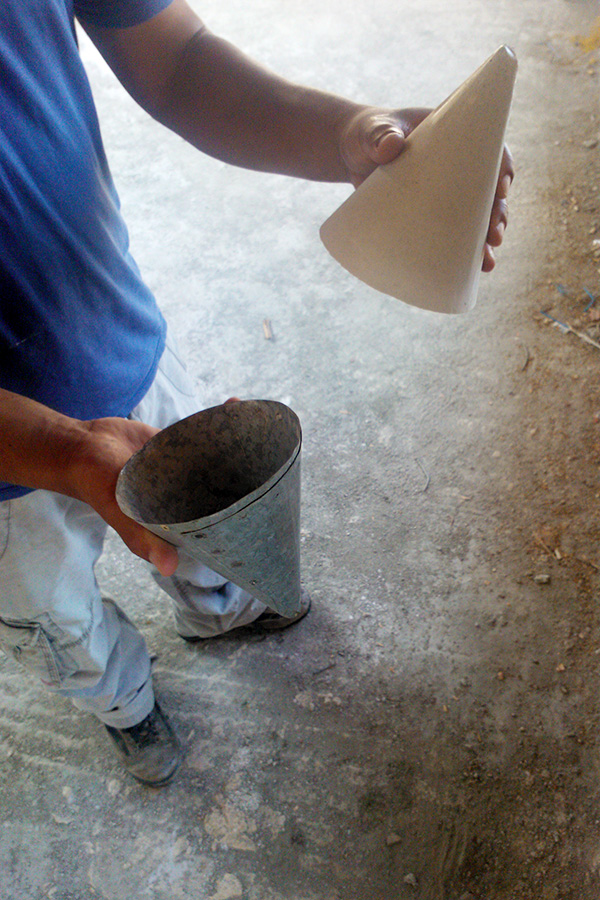
Some of the details are formed by hand - for example the 'carrot'.
Credits
-
- Structural Engineer - Sotiris Dermitzakis
- Project Manager - Sotiris Dermitzakis
